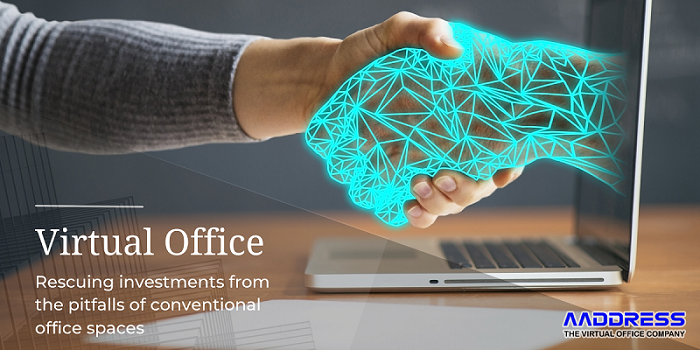In today’s rapidly evolving world, technology has revolutionized the way we live and work. One significant catalyst in this transformation is the rise of virtual offices, which are replacing outdated traditional office spaces and introducing a new realm of productivity, teamwork, and work-life balance.
With the increasing acceptance of remote work and digitalization, virtual offices are unlocking untapped potential by allowing employees to work from anywhere, at any time, and unleashing their full capabilities.
The market value of virtual offices is projected to soar from USD 40.51 billion in 2021 to an impressive USD 137.65 billion by 2029, with a compound annual growth rate (CAGR) of 16.52%.
Gone are the days when employees were tied to their desks from 9 to 5. Virtual offices provide greater autonomy to both employees and business owners over their work.
Businesses now have the freedom to create their own work environment, whether it’s a bustling cityscape, a cozy café, or the comfort of their own homes. The workplace becomes tailored to individual preferences and tastes.
According to a report by Maximum Market Research, a renowned market research company, approximately 44 percent of companies have transitioned to virtual offices following the Covid-19 pandemic.
Furthermore, financeonline.com reveals that 62% of employees are willing to switch companies to join one that operates through virtual offices. This clearly indicates that the workforce is happier with the virtual office setup, which ultimately reduces employee turnover rates.
Another significant advantage of virtual offices is the reduction in costs. Aaddress.in, a leading virtual office company, claims to have reduced up to 87% of the total expenses associated with hiring and maintaining physical office spaces through their virtual office services.
Aaddress.in was founded in 2018, and despite initial market resistance stemming from the prevailing notion that effective business operations require physical offices, the company gained its first client within six months.
In 2019, the company successfully challenged this traditional mindset, breaking the pattern in the market. The Covid-19 pandemic acted as a blessing in disguise for Aaddress.in, providing an opportunity to showcase the relevance and power of virtual offices.
By 2021, Aaddress.in had established itself as a leading brand in virtual office services. As reported, the company had over 400 virtual offices across India in 2022.
In the fiscal year 2023-2024, Aaddress.in plans to expand its virtual office services beyond India. Although it hasn’t been confirmed yet, CEO Ankur Goel has not dismissed the possibilities.
Returning to the benefits of virtual offices, setting up a traditional physical office space could take days or even months. In contrast, a virtual office can be established within minutes. All one needs is a laptop and an internet connection, allowing professionals to seamlessly integrate their work and personal lives, fostering a healthier work-life balance.
This approach not only saves money but also provides economic advantages to companies opting for virtual offices. By eliminating the need for dedicated physical spaces, businesses can allocate resources more efficiently, investing in critical areas such as talent acquisition, product development, and marketing strategies.
Startups and small businesses, in particular, benefit from this cost-saving approach, enabling them to scale their operations without incurring exorbitant expenses.
Furthermore, virtual offices contribute to increased productivity among employees. Studies have shown a 13% boost in productivity within the first nine months of transitioning to virtual offices. This increase can be attributed to the sense of autonomy and freedom provided by virtual work environments, allowing employees to unleash their creativity.
Virtual offices also foster a collaborative environment, even in remote settings. Advanced communication and collaboration tools such as video conferencing, instant messaging, and project management platforms enable teams to stay connected, share ideas, and work together seamlessly.
Moreover, virtual offices save time for both employees and companies. Commute time is eliminated, and the costs and time associated with travel, meetings, and conferences are significantly reduced.
Businesses worldwide have recognized the potential of virtual offices, gaining access to a diverse talent pool unrestricted by geographic location. Employees, too, benefit from the convenience of working from home or within their own cities, boosting their morale and driving them to work more efficiently.
While setting up a virtual office may come with its challenges, such as communication gaps among teams and the lack of physical office culture, these issues are manageable. Advanced tools like video conferencing, instant messaging, and project management platforms can bridge communication gaps and allow employees to collaborate regardless of their physical location.
Company culture can be nurtured through routines and rituals, even in a virtual setting. Simple practices like scheduled reporting and feedback sessions can have a significant impact on the work culture. Similarly, establishing regulations and work habits such as weekly, monthly, and quarterly review meetings can sustain the brand image of the company.
Despite these challenges, businesses of all sizes are embracing the virtual office revolution. Multinational corporations leverage virtual workspaces to enhance global collaboration, break down silos, and foster cross-cultural understanding. Freelancers and independent professionals embrace the freedom and flexibility offered by virtual offices, enabling them to pursue their passions on their own terms.
As the virtual office trend continues to reshape the modern workforce, it becomes evident that it is here to stay. The digital age has empowered a new breed of professionals who can work whenever, wherever, and however they choose, providing companies that adapt to this paradigm shift with a competitive edge. By tapping into a vast talent pool and harnessing the collective power of diverse minds, businesses can thrive in this flexible and dynamic work environment.
Virtual offices have unlocked the power of work in the digital age, offering unparalleled flexibility and reshaping the way we approach work.



